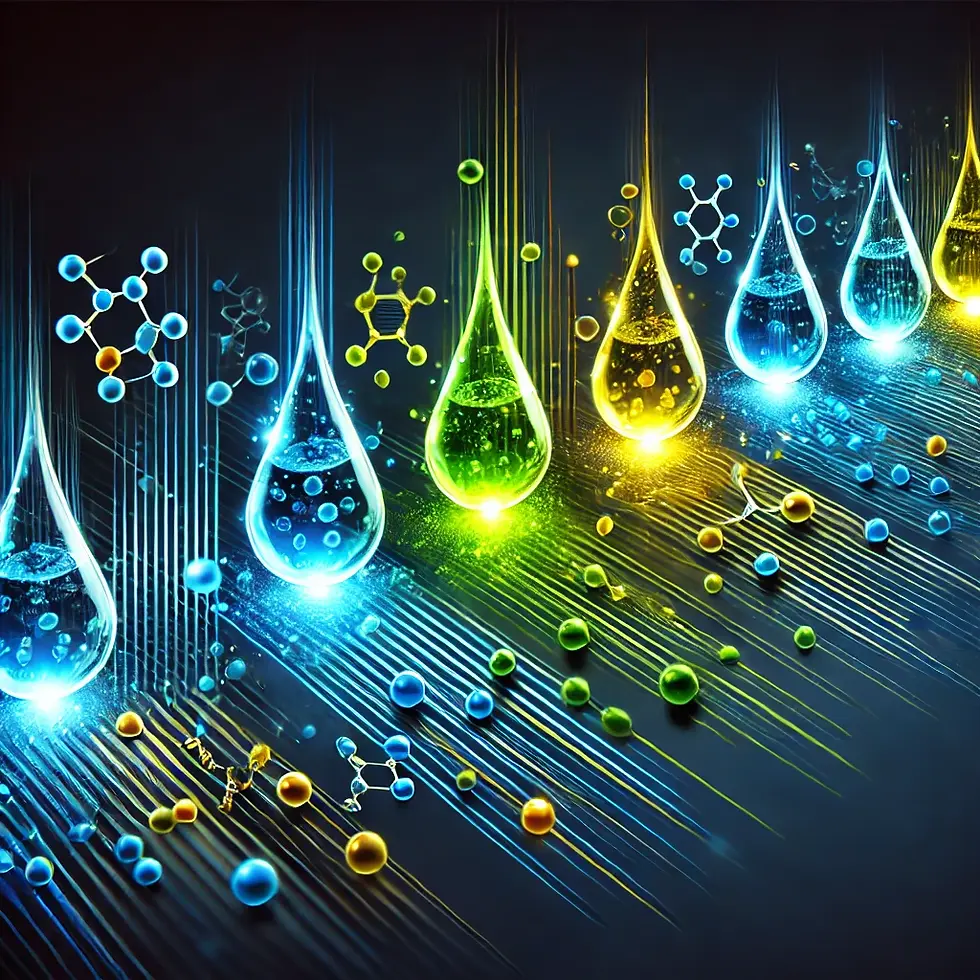- GENXMAP genxmap@gmail.com

- Jan 14
- 2 min read
Updated: Feb 10

In the fast-evolving field of genomics, digital PCR (dPCR) stands out as a groundbreaking technique, redefining precision in the quantification of nucleic acids. With unparalleled sensitivity and accuracy, dPCR is transforming how we can detect, measure, and analyze genetic material. Let’s dive into the principles of dPCR, its key technologies, and its applications.
What is dPCR and how does it work?
dPCR is an advanced evolution of traditional polymerase chain reaction (PCR) and quantitative PCR (qPCR). Unlike these earlier techniques, which rely on relative quantification, dPCR delivers absolute quantification of nucleic acids. This is achieved by partitioning the sample into thousands—or even millions—of individual reactions, each containing zero or one target molecule.
How It Works:
The sample is divided into microchambers, droplets, or wells depending of the technology used, creating thousands of individual PCR reactions "#Partitioning". And each partition undergoes independent amplification, targeting specific DNA or RNA molecules "#Amplification". Then the fluorescent signals reveal whether amplification has occurred in each partition. Positive partitions contain the target molecule; negative ones do not #Detection. Finally, using Poisson statistics, the absolute quantity of target molecules is calculated based on the number of positive partitions #Quantification.
Applications of Digital PCR
1. Detection of rare variants
dPCR excels in identifying genetic variants present at very low frequencies, making it invaluable for:
Cancer research: Detecting rare oncogenic mutations in tumors.
Liquid biopsies: Monitoring circulating tumor DNA (ctDNA) in blood samples for non-invasive cancer diagnostics (1).
2. Quantification of low-abundance transcripts
dPCR can reliably detect transcripts with extremely low expression levels (2), which are often missed by qPCR:
Gene expression studies: Analyzing rare cell populations or low-expressed genes.
Pathogen detection: Quantifying low-abundance viral or bacterial DNA/RNA in clinical or environmental samples.
3. And much more applications...
Copy Number Variation (CNV) analysis: Precisely determining gene copy numbers in genetic studies.
Quality Control: Verifying the integrity of next-generation sequencing (NGS) libraries.
Environmental monitoring: Detecting trace levels of pathogens or contaminants in water, soil, and air.
Stay tuned for the next monthly blog from GenXmap, where we continue to explore cutting-edge advancements in -omics field and its applications in scientific and medical field.
References:
(1) Izquierdo E, Proszek P, Pericoli G, Temelso S, Clarke M, Carvalho DM, Mackay A, Marshall LV, Carceller F, Hargrave D, Lannering B, Pavelka Z, Bailey S, Entz-Werle N, Grill J, Vassal G, Rodriguez D, Morgan PS, Jaspan T, Mastronuzzi A, Vinci M, Hubank M, Jones C. Droplet digital PCR-based detection of circulating tumor DNA from pediatric high grade and diffuse midline glioma patients. Neurooncol Adv. 2021 Jan 27;3(1):vdab013. doi: 10.1093/noajnl/vdab013. PMID: 34169282; PMCID: PMC8218704.
(2) Taylor SC, Laperriere G, Germain H. Droplet Digital PCR versus qPCR for gene expression analysis with low abundant targets: from variable nonsense to publication quality data. Sci Rep. 2017 May 25;7(1):2409. doi: 10.1038/s41598-017-02217-x. PMID: 28546538; PMCID: PMC5445070.






Comments